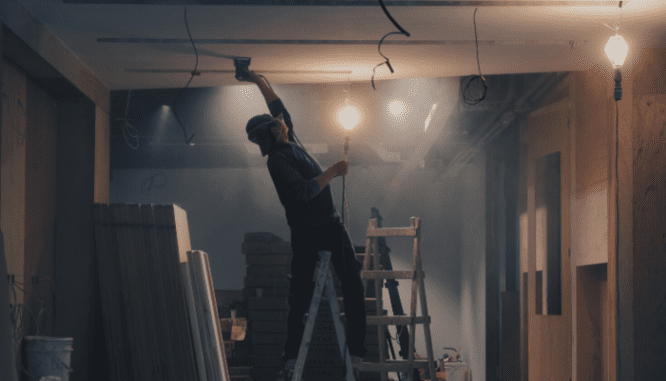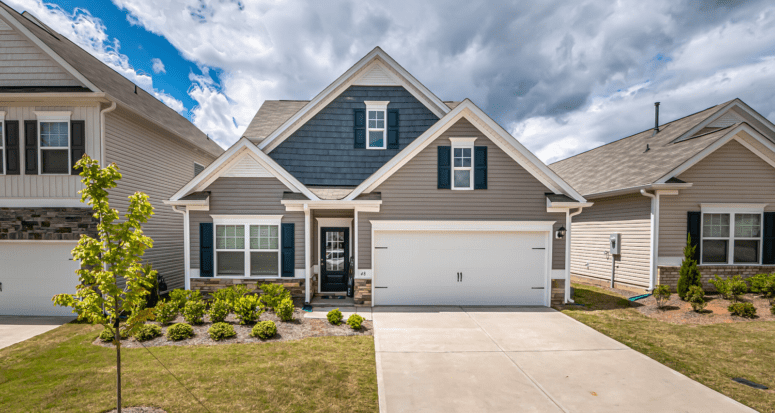How New Construction Buyers Should Expect Coronavirus to Impact Their Purchase
- Published on
- 4 min read
-
 Kim Dinan Contributing AuthorClose
Kim Dinan Contributing AuthorClose Kim Dinan Contributing Author
Kim Dinan Contributing AuthorKim Dinan is a writer, journalist and author. She's the outdoor news editor at Blue Ridge Outdoors and writes regularly for her local paper in Asheville, NC, covering everything from the necessity of home inspections to trends in the local economy. Kim is also the author of "The Yellow Envelope," a memoir about the time she sold her house and traveled around the globe.
A new construction home is supposed to come to you free of any problems and issues, but nothing is perfect in the era of a pandemic. In some states, construction is not considered an essential service, so if you’re in the process of building a home, you’ll inevitably face delays.
If you’re a buyer about to embark on a new-construction home search, you may struggle there as well. Recent data shows that US home construction collapsed 22.3% in March, thanks to the coronavirus. As a new construction buyer, you might have an easier time than a buyer looking at existing homes with sellers living inside them, but you can still expect the coronavirus to have some effect on your new-construction purchase.
Here’s how new construction buyers can expect to be impacted by the coronavirus.

Dealing with government restrictions
In many places across the country, construction is considered an essential service and is moving along more or less normally despite COVID-19. This is in part because exposed wiring or insulation will start to degrade quickly if workers just leave a job site and don’t return for weeks.
In Eden Prairie, Minnesota, for example, where top-selling real estate agent Jason Barkley works, “real estate is exempt from the Governor’s shelter-in-place order,” he says.
However, that’s not the case everywhere.
During Michigan’s shutdown, which lifted in early May, only very limited construction was allowed (and those limitations did not include new-construction home builds). Jeff Todd, a real estate agent with 36 years of experience in Rochester Hills, Michigan, told us in the thick of the state shutdown: “We are essentially at a standstill.” Michigan allowed certain types of construction during the shutdown (road construction, infrastructure, or construction required to maintain an existing home’s safety or sanitation), but not new home construction.
In New York, Pennsylvania, and Washington, construction is not considered an essential service in the time of coronavirus and has ground to a halt. In other states, such as Colorado, Massachusetts, and Todd’s state of Michigan, construction during shutdowns is allowed, or allowed in limited capacities, but some cities and counties within those states have tighter restrictions.
Even in states where construction is still happening, new construction has taken a hit. “Builders have been able to move forward, but the virus has had an impact, obviously,” says Barkley. “Before the virus, builders were having the best years they could have.” But since the virus struck, “there’s been a slowdown.”
Health and safety concerns
There are many health and safety considerations these days, and each one has the potential to slow down the new construction process.
When it comes to buying a new construction home, the virus has changed a few steps of the process, says Barkley. “If you’re building from scratch, the design center appointments were always a fun meet-and-greet for everyone,” he says. “Buyers would go through the process of making their selections, and there may have been a few others in the design center making their selections at the same time.”
But that’s all changed now, Barkley says. Nowadays, as a health and safety measure, buyers can only enter the design center by appointment, and they can’t bring their family and friends with them to help make decisions.
Other health and safety concerns impact your home during construction. The people working on your house are going to need to stay safe, of course, so there may be some understandable delays as workers take more time to wash hands or use hand sanitizer, dress in their protective gear, or even self-isolate if they believe they’ve been exposed to the virus.
Another change that has been made in the wake of the virus is the walk-through process as you build. “Things like drywall or electrical walk-throughs, and most important of all — the final walk-through — have changed significantly,” says Barkley. “The final walk-through used to be a three-hour event. The buyer and a representative for the builder would go through every single thing in the house together.”
Since the virus emerged, “The builders have taken the time to put together videos that they email to the buyer,” Barkley says. The videos explain how the HVAC system and water softening systems work, for example. “Instead of a three-hour event, the final walkthrough is about 30 minutes now,” says Barkley. “The buyer is just looking for defects in the house before it closes — instead of a combination of looking for defects and learning how the systems work in the home.”

Potential labor shortages
Health and safety delays are one thing, but if people who are working on your house get sick, or if your builder has to lay off workers because of the economic fallout, that might seriously derail your timing.
As of mid-March, construction employment had dipped by 29,000 jobs, according to the National Association of Home Builders. Residential construction employment decreased by 4,300 in March, after a revised increase of 24,100 in February.
That’s a big problem because even when the economy was chugging along, many areas of the country already suffered from a labor shortage. Barkley says that in Minnesota, they’ve had a labor shortage for years that has impacted new construction build times.
“Some of the big national builders here have had trouble keeping enough framing crews on hand to keep up with demand,” he says. “When there was plenty of labor, big national builders could build a house in four months — now, they’re saying about six to nine months.”
On the other hand, with unemployment spiking, there may be plenty of laborers ready and willing to take on work, which would ultimately speed up build times. “We will see what happens,” says Barkley. “Obviously, things have changed, and people are looking for work now.”
Likely supply shortages
The virus has had an enormous impact on the global supply chain.
According to Construction Dive, U.S. builders look to China for everything from steel and stone to millwork and plumbing fixtures. The virus has slowed and shut down factories in China and around the world, impacting production.
As a result, builders might not have all the materials they need to finish homes on time — or new construction buyers may find that they have to cut some corners or compromise on the kinds of materials they use in their new home.
On a related note, construction materials have been, and continue to be, expensive — and a short supply of materials may increase their price over time.
“I was speaking with a builder about a week ago and he said the challenge with new construction is materials are so expensive that you really can’t build a small, first-time home,” says Todd.
“New construction builders can’t make any money on a 1,200 square-foot ranch. Materials, labor cost and lots are too expensive — a builder has to build a house twice that size to make any money.”
Additionally, many manufacturing facilities around the world are prioritizing essential items, and some of the construction materials needed for new construction homes may not be considered essential, inevitably delaying build time.
Financing disruptions
The coronavirus has disrupted nearly every aspect of American life, and that includes financing for homebuyers. Because the virus has put so many workers on unsteady footing, some lenders are imposing overlays. In other words, many lenders are tightening their lending standards.
Depending on when and through whom you applied for your loan, you may find you suddenly need a higher credit score, or a bigger down payment, than you did before.
Todd says that the standard credit score for lending “used to be a minimum score of 620 or 640 — but the last report I heard was 700.” The good news, says Todd, is that the brokers in his network expect the credit score requirement to return to 620 or 640 again soon once stay-at-home restrictions are lifted. “They expect it to go back to normalcy in the next two to four weeks.”
Still, there are ways you can protect yourself from changing lending requirements.
As you choose the finishes for your home, try to be as frugal as you can with upgrades — and be moderate with your price in the first place. This way, if your approved loan amount changes, you’re not forced to abandon a home because it was at the top of your price range.
Barkley recommends all buyers educate themselves on the homebuying process. “Know what your credit score is. Know your options. Do your homework so you understand what builders and lenders are talking about as you go through the homebuilding process — it helps to have a common language.”

Trouble with travel and move-in
Even when your house is finished, you might encounter some delays if you are moving in from out of state. Currently, some states (like Arizona and Kentucky) require that all out-of-towners quarantine for 14 days.
In other states, like Connecticut, out-of-state travel is strongly discouraged by the governor (though not technically illegal.)
Depending on how tight restrictions are in your area, you may also struggle to hire a moving crew during the pandemic. If you do hire movers, make sure you ask them to wear masks and gloves while working in your home.
Leave all doors and cabinets open and all lights on in order to limit the surfaces they touch. When everything is in your home and the movers leave, wipe down surfaces and doorknobs with an EPA-registered disinfectant.
The coronavirus has undoubtedly impacted new construction, but with a little patience and perseverance, you will still be able to build and move into the new construction home of your dreams.
Header Image Source: (Curtis Adams / Pexels)
